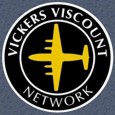
April 1957 to March 1972
Türk Hava Yollari - Turkish Airlines (THY)
TC-SEC - c/n 246 - a V.754D series Viscount
Turkey registered
circa April 1957
Sold to Türk Hava Yollari - Turkish Airlines (THY) as their 1st Type V.794D.
Production Aircraft No. 238 - the 223rd production V.700 series Viscount built,
was the 196th Viscount fuselage assembled at Hurn, Bournemouth, Hampshire, England,
and the 193rd Viscount assembled at Hurn, Bournemouth, Hampshire, England.
Production Order No. F01/794. Sales Order No. 01/36C. Stock Order No. 39/32B.
17 July 1957
Fuselage assembly commenced at Hurn Airport, Bournemouth, Hampshire, England.
19 September 1957
Fuselage to Erecting Shop 'E' at Hurn Airport, Bournemouth, Hampshire, England.
9 January 1958
First flight from Hurn Airport, Bournemouth, Hampshire, England.
14 January 1958
Noted at Blackbushe Airport, Hampshire, England during the test flight period.
21 January 1958
Delivered to Türk Hava Yollari - Turkish Airlines (THY). The rear cabin area was fitted out for VIP use including two single beds.
10 February 1958
Noted at Blackbushe Airport, Hampshire, England due to a London Airport (Heathrow) weather diversion.
29 May 1961
Arrived at Gatwick Airport, Surrey, England.
29 May 1961
Departed from Gatwick Airport, Surrey, England.
1963
The undercarriage collapsed during a landing at Lod Airport, Tel Aviv, Israel resulting in curled propeller blades and shockloaded Dart engines.
circa 1965
Noted at Gatwick Airport, Surrey, England on several occasions operating charter flights from various European airports such as Brussels, Belgium and Frankfurt, West Germany.
circa June 1966
Noted at Hurn Airport, Bournemouth, Hampshire, England undergoing maintenance with the British Aircraft Corporation (BAC).
16 March 1968
During a scheduled service from Yeşilköy Airport, Istanbul, Turkey to Diyarbakir, Turkey a major in-flight incident occurred: -
After taking off and reaching an altitude of 13,000 feet, rapid decompression occurred as a result of a failure of
the upper portion of the forward passenger door.
A third pilot, Captain Kemal Karapars, who was sitting in a stewardess seat near this door was sucked out, and the left-hand toilet bulkhead and closet were also ejected.
The port No.1 and No.2 propellers were damaged, causing the No.1 Rolls-Royce Dart engine to 'autofeather'. The No.2 propeller was manually feathered by the flight crew.
An approach was made to Gengistopel Military Airfield for an emergency landing, but during the final approach it was found that the starboard main undercarriage leg
would not lock down.
On landing, the starboard main undercarriage leg collapsed, and during the ensuing ground roll the aircraft was substantially damaged including curled starboard propeller blades
and shockloaded Rolls-Royce Dart engines as well as damage to the fuselage belly.
Among the remaining 4 crew and 49 passengers on board, some suffered minor injuries during the landing but the aircraft was safely evacuated.
After temporary repairs the aircraft was ferried unpressurised to Stansted Airport, Essex, England and repaired by Aviation Traders Engineering Ltd and returned to service.
19 March 1970
The aircraft was on approach to Esenboğa International Airport, Ankara, Turkey and after the undercarriage was lowered the pilots noted that the hydraulic pressure had dropped to zero.
After landing, the aircraft overshot the runway due to no brake pressure resulting in curled propeller blades and shockloaded Dart engines and damage to both wings.
There were no reported injuries to the passengers and crew on board.
The loss of hydraulic pressure was caused by the failure of a component located in the nose undercarriage bay.
Repaired and returned to service.
28 March 1972
Transferred to Türk Hava Kuvvetleri - Turkish Air Force.
|



